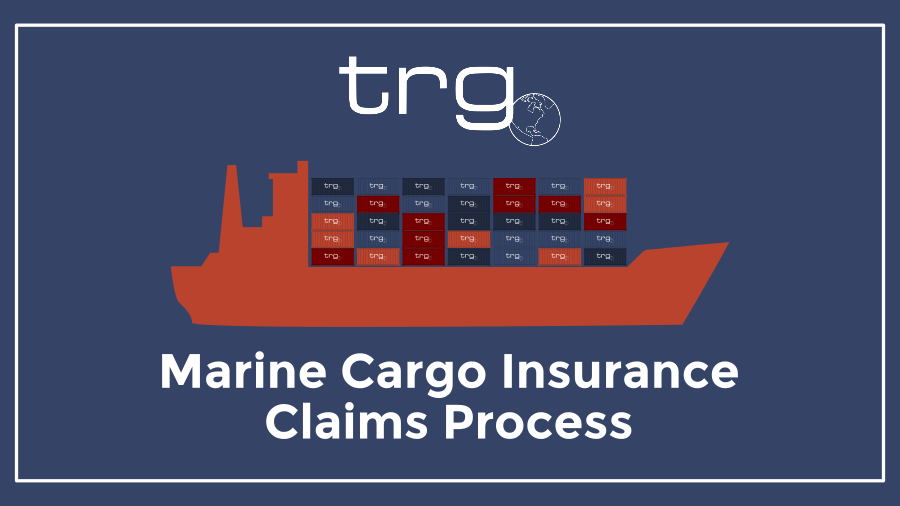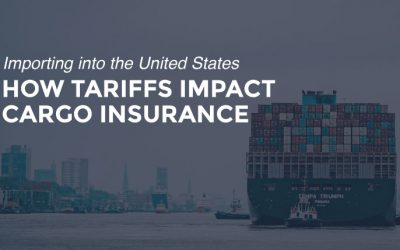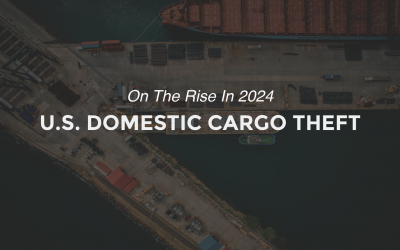Trade Risk Guaranty walks you through what to expect during the TRG marine claims process in an informative video.
When you have a Marine Cargo Insurance policy with Trade Risk Guaranty, we know the hope is that you never have to use it. But knowing the claims process can help you better protect your company’s interest.
Let’s say you have received a scheduled shipment of widgets. Upon inspection of the shipment, you notice that a pallet of widgets has gone missing. However, you have Marine Cargo Insurance through Trade Risk Guaranty. So what should you’re next steps be to submit a claim to recover the loss?
Well, there are three phases in the overall process of handling a claim: Notification, Information Gathering, and Determination. And through these phases, TRG is here to act as your claims liaison.
Discover the Full TRG Marine Claims Process
Watch the following video for a full walkthrough on how your claim will be handled throughout the TRG marine claims process.
TRG Marine Claims Process Step One: Notification
The very first thing you need to do upon discovering you may have a claim is to notify Trade Risk Guaranty. Whether you prefer to make a phone directly to TRG’s Marine Team or to send over a quick email, the earlier you notify your claims liaison, the more effectively and efficiently your claim can be handled.
Once you have notified TRG, you will receive a few forms to fill out or send to the appropriate parties involved in the claim. The first form is a Claims Notification Form and it gives a summary of the claim details so TRG can advise you on next steps and start our work with the insurance company for you.
This second thing you will need to do immediately is Reserve your Rights in writing with the responsible party. Reserving your rights is the act of notifying the responsible party that you have suffered a loss and may have a claim. On average, a policyholder has 14 days to reserve their rights and that is 14 days from the time the shipment has departed, not from arrival at the destination.
The most important thing to note in Phase One is not to wait. Send these notifications out as soon as a claim may arise. A false alarm is much better for your policy than a late notice and can be easily closed without an impact on your rates.
TRG Marine Claims Process Step One: Information Gathering
There are two paths when it comes to the process of gathering information for a Marine Insurance claim. The path your claim will take is determined by the size and circumstances of the claim. Typically a claim is considered large when it is for $5,000 or more, but this is ultimately determined by the insurance company for you.
If you have a smaller claim, the process is pretty simple. You will be required to provide documents substantiating the claim which TRG will forward to an assigned adjuster. Your TRG claim liaison will explain what documents are needed or where to find typically requested information as you go. The adjuster will then review the documents and provide a settlement on the claim.
However, if it is a larger amount, a surveyor is assigned to the claim. Typically, the surveyor will contact you directly to schedule an inspection at your earliest convenience. Once the surveyor conducts the inspection, they will also collect all the required documents and provide them to the adjuster. At this point, the adjuster will review the documents and the Surveyor’s report and send any questions they still have to TRG. It’s very important that you remain responsive to the surveyor as the adjuster cannot make a decision until the surveyor submits a final report.
In the information gathering phase, it is important for you, the policyholder, to provide any and all necessary documents that may have an influence on the claim. Documents can still be filed in the Determination phase, but this may delay finalizing the claim.
TRG Marine Claims Process Step One: Determination
Once the adjuster has all of the information needed, there are two questions that have to be answered: First, is the claim is covered by the insurance policy in place? If the answer is yes, then they move directly into the next question: how much is the policyholder entitled to recover?
This process of determination is completely based on the policy itself and the documents submitted in the information gathering phase. Remember, the insurance company does not know about an expense involved in a claim unless the policyholder tells them, although TRG claims specialists can usually anticipate typically claimed expenses or the application of enhancement clauses.
The final claim settlement is determined in the following fashion:
- First, determine how much of the cargo is lost/damaged and the value of that loss.
- Second, take into account any other payments received for the claim from other parties. For example, UPS is typically liable for about $100 per package so that payment would be deducted.
- From there any Enhancement Clauses on the policy are considered to determine if they affect the claim.
- Then any penalties accrued during the claims process are applied. These penalties could be for things like filing the claim late, infringing on subrogation rights, or for under-insuring the total value of the goods. However, these are rarely applied when the policyholder maintains communication with TRG throughout the process as we keep an eye out to avoid penalties.
- At this point the deductible is applied to the claim amount.
- The settlement is then submitted to the policyholder for approval.
- Once approval is received, the settlement is delivered.
- Depending on the size of the claim, you may be asked to sign a subrogation receipt after or during payment of the claim. This basically confirms your claim has been settled and the insurance company can seek subrogation from whoever caused the damage.
Don’t forget that TRG is here to help you through this process and to communicate clearly with the insurance company. When you have a policy to TRG, you gain access to our team of Marine Claims experts that are there to answer your questions and keep you updated throughout the process.







